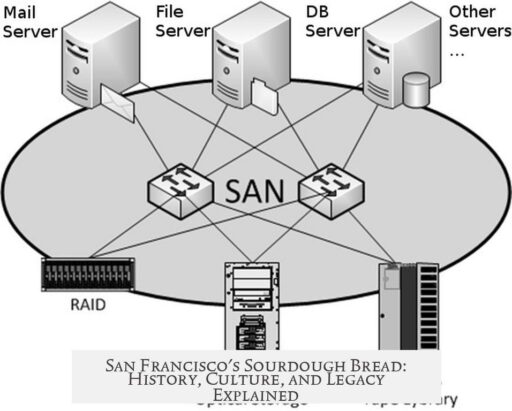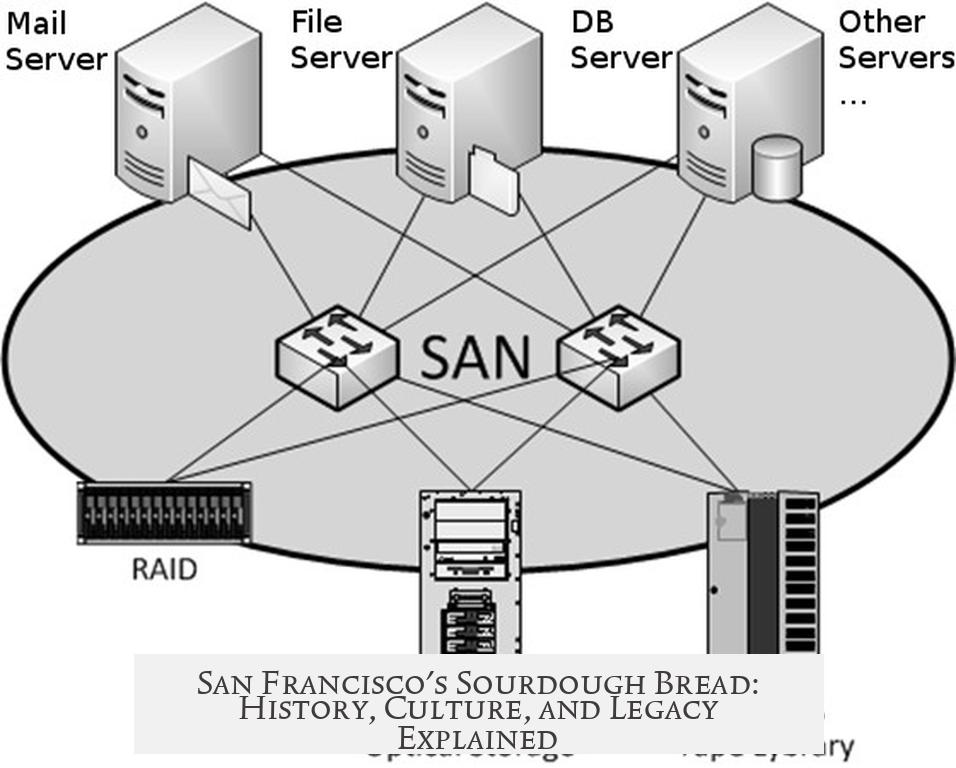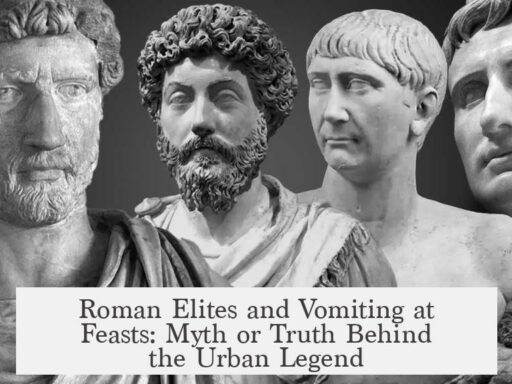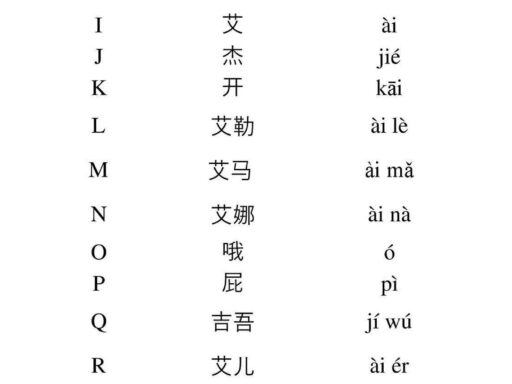San Francisco is closely associated with sourdough bread due to its historical, cultural, and scientific factors, all rooted in the California Gold Rush era.
During the mid-1800s Gold Rush, sourdough proved practical for pioneers and miners. It was durable, easy to make, and used readily available wild yeast and bacteria for fermentation. This made sourdough a staple food for those in the region.
French immigrant bakers, notably the Boudin family, brought European bread-making traditions to San Francisco around 1849. Boudin Bakery, still operating today, claims to use the original sourdough starter from that era. This starter’s unique wild yeast and bacteria strains, shaped by local climate and water, gave San Francisco sourdough its distinct tang and texture.
The regional environment influenced bread characteristics. Wild yeasts and lactobacilli adapted to local conditions, creating a flavor profile that differs from sourdough elsewhere. The water’s mineral content and temperature in San Francisco contributed to these differences, making the bread recognizable worldwide.
Mass industrial bread production after World War II shifted American bread preferences toward uniform, soft, and mild loaves like Wonder Bread. However, San Francisco resisted this trend. Many bakeries there preserved their traditional sourdough starters and artisanal techniques despite the rise of mass-produced bread.
The artisan bread revival in the 1980s and 1990s helped San Francisco reclaim its status. The city’s continuous sourdough tradition positioned it to lead this movement. As a result, San Francisco sourdough became a culinary icon.
- Gold Rush miners relied on sourdough for durability and ease of preparation.
- Boudin Bakery established a lasting sourdough tradition using a historic starter.
- Local climate, water, and microbes created a unique bread flavor and texture.
- San Francisco resisted post-war mass-produced bread trends.
- The artisan bread renaissance renewed global appreciation for San Francisco sourdough.
Why is San Francisco Associated with Sourdough Bread?
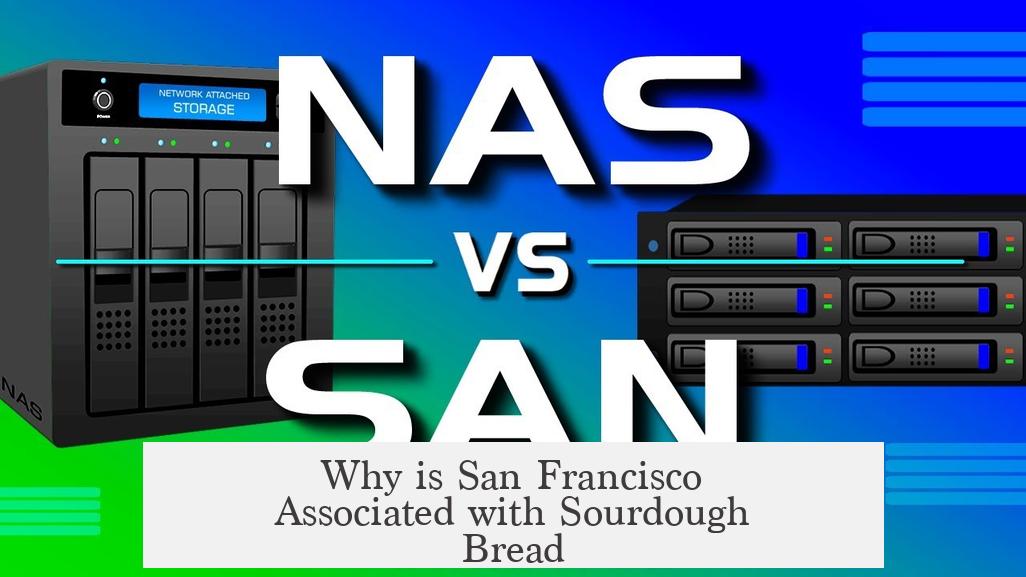
Simply put, San Francisco’s link to sourdough bread comes from history, geography, and a dash of pioneer spirit. This city’s unique environment, combined with its fascinating Gold Rush past, created the perfect storm for sourdough bread to become a beloved staple and icon. And yes, there’s more to it than just tasty bread and foggy streets!
Let’s dig into why sourdough and San Francisco go hand in hand, and why this tangy treat remains cherished to this day.
The Pioneer’s Best Friend: Why Sourdough Was Ideal During the Gold Rush
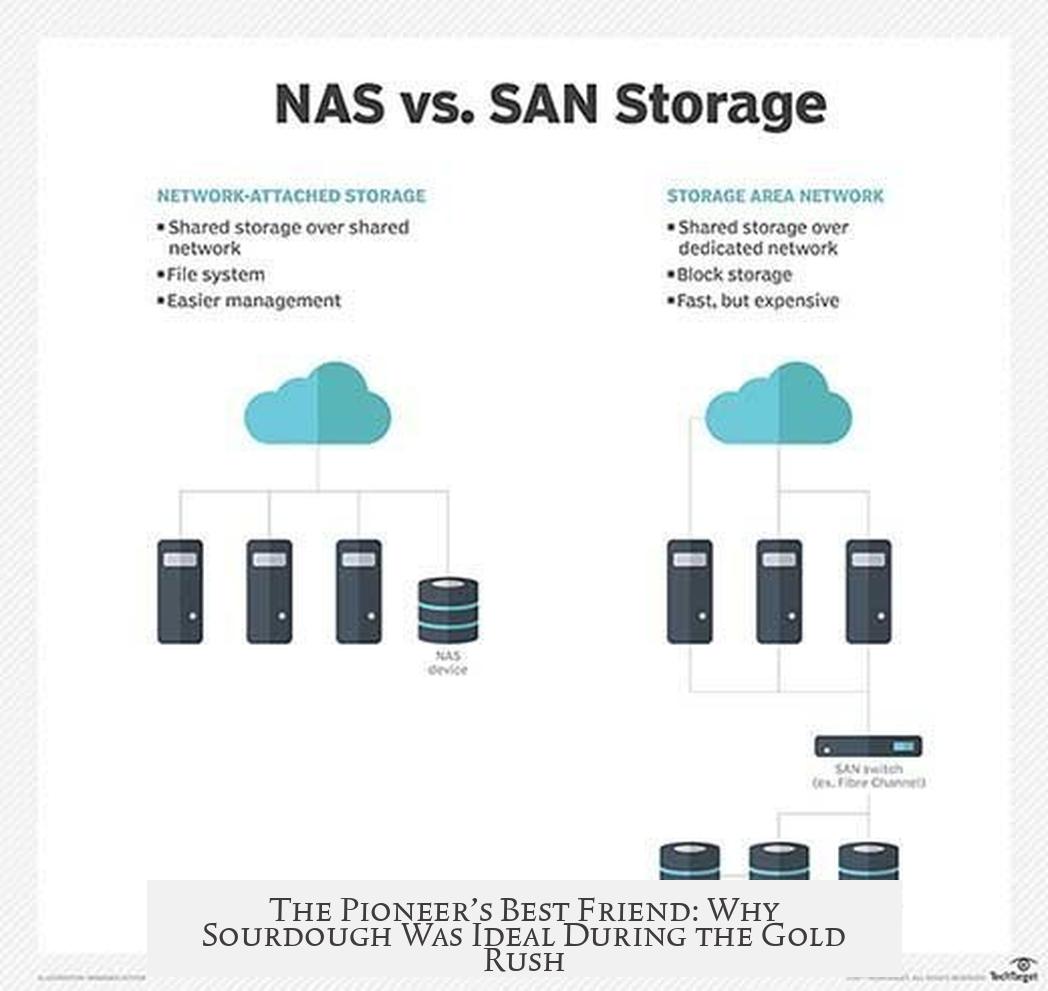
Back in the mid-1800s, the California Gold Rush brought thousands seeking fortune—and they needed food that could last. Sourdough bread was just that: durable, easy to make, and a reliable source of nourishment for the often harsh pioneer lifestyle. This wasn’t just a fancy choice; sourdough was a survival tool.
This kind of bread involved a fermented starter that naturally preserved it longer than regular bread. Using wild yeast and lactic acid bacteria, sourdough stayed fresh and avoided spoiling during those risky mining expeditions. It was less likely to go stale and supplied a subtle tang that miners apparently welcomed after long, dusty days.
Immigrants, Innovation, and the Birth of San Francisco Sourdough
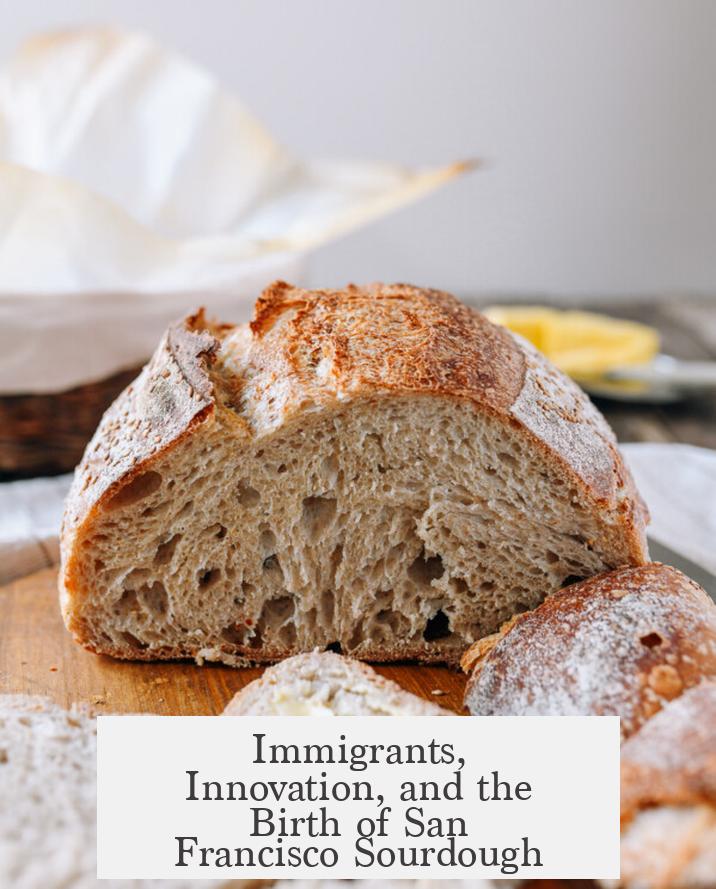
San Francisco’s sourdough story wouldn’t be complete without mentioning a determined French baker named Isidore Boudin. He arrived in the city amid the Gold Rush, taking note of the local miners’ bread. Skilled in French baking tradition, Boudin started Sacramento’s famous Boudin Bakery in 1849, a year that now echoes through baking history.
Boudin brilliantly combined his traditional French techniques with the wild starter cultures already thriving in San Francisco’s unique environment—specifically, the local yeast strains that gave the bread its distinctive flavor. And get this: the bakery still exists today and claims to use the same mother starter from 1849. That’s like a living piece of history baking under your nose!
Regional Variations: The Secret Sauce of San Francisco’s Sourdough
San Francisco’s sourdough flavor doesn’t just come from the recipe—it depends heavily on local conditions. This city’s climate, water minerals, and the naturally occurring yeast there all combine to give its sourdough a unique, tangy kick.
In bread-making, these environmental factors—sometimes called “terroir” in food terms—make all the difference. The wild yeast and bacteria found only in San Francisco’s air and water mean you won’t find this exact flavor anywhere else. It’s like a sourdough fingerprint, exclusive to this slice of the world.
The Industrial Age Threat and San Francisco’s Love for Tradition
After World War II, mass production took over bread-making across America. Convenient, cheap, and consistent bread! Enter the era of the ubiquitous Wonder Bread: soft, mild, uniform but lacking character.
However, San Francisco didn’t jump fully on this industrial bread train. Rather than abandoning sourdough, many local bakeries continued their craft. The city held tightly to its yeast strains and fermentation techniques during a period when most of the country traded quality for convenience.
This resistance to mass-produced bread kept San Francisco sourdough alive and well. Thanks to these dedicated bakers, the city preserved an artisanal tradition that could have easily vanished in the pink foam of sliced wonder.
The Artisan Bread Renaissance: San Francisco’s Moment to Shine
Fast forward to the 1980s and 1990s, when Americans developed a renewed taste for artisanal foods. San Francisco was primed to lead this bread renaissance because it never really left its sourdough roots.
While other cities were just rediscovering artisan bread, San Francisco already had a flourishing culture and reputation. This was sourdough’s comeback tour, with San Francisco proudly waving the banner. Consequently, “San Francisco sourdough” has become almost a brand, symbolizing authenticity and tradition in each crusty loaf.
What Can We Learn from San Francisco’s Sourdough Legacy?
- Sourdough Bread Began as Practical Food: It was durable and essential for miners and pioneers.
- Immigrant Bakers Shaped the Craft: Isidore Boudin introduced French techniques and preserved starter culture.
- Local Climate and Yeast Create Unique Flavor: No two sourdoughs are exactly alike, and San Francisco’s environment gives its bread a signature taste.
- Resistance to Industrialization Preserved Tradition: While mass bread became common, San Francisco held on to artisanal methods.
- The Artisan Revival Cemented Its Fame: San Francisco sourdough transformed into a culinary icon during the bread renaissance.
If you ever enjoy a slice of tangy, chewy sourdough, you are tasting a deep connection to history and place. Each loaf tells a story—of miners, immigrants, yeast, and bakers determined to keep a tradition alive.
So next time you visit San Francisco, or pop a sourdough sandwich in your lunchbox, remember the journey behind that crusty bread. It’s not just food—it’s a resistance to uniformity, a celebration of craft, and a living piece of the Gold Rush spirit that shaped an entire city.
Final Thought
Why settle for plain bread when you can have a slice of history? San Francisco sourdough isn’t just a loaf. It’s a flavorful bridge connecting the rugged pioneers of the West with today’s artisan food lovers. That tang you taste? It’s the perfect bite of tradition.
Why did San Francisco become famous for sourdough bread during the Gold Rush?
Sourdough was easy to make and lasted long, ideal for miners and pioneers. The Gold Rush brought many to the area, making sourdough a staple food for survival and convenience.
How did immigrants influence San Francisco’s sourdough tradition?
French baker Boudin arrived in 1849 and mixed his baking skills with local sourdough use by miners. His bakery still uses the original starter culture, preserving early techniques and flavors.
What makes San Francisco sourdough different from other breads?
The unique local climate, water, and wild yeast strains give San Francisco sourdough its distinct taste and texture. These regional factors shape the bread’s special qualities.
Why did San Francisco maintain sourdough bread while the rest of the country shifted to mass-produced bread?
After WWII, mass-produced bread became popular, but San Francisco bakeries continued using traditional starters. This helped preserve sourdough despite nationwide trends for faster, cheaper bread.
What role did the artisan bread revival play in San Francisco’s sourdough fame?
The 1980s-90s artisan bread revival renewed interest in traditional baking. San Francisco was ready with its ongoing sourdough culture, boosting the bread’s popularity and reputation across the U.S.
